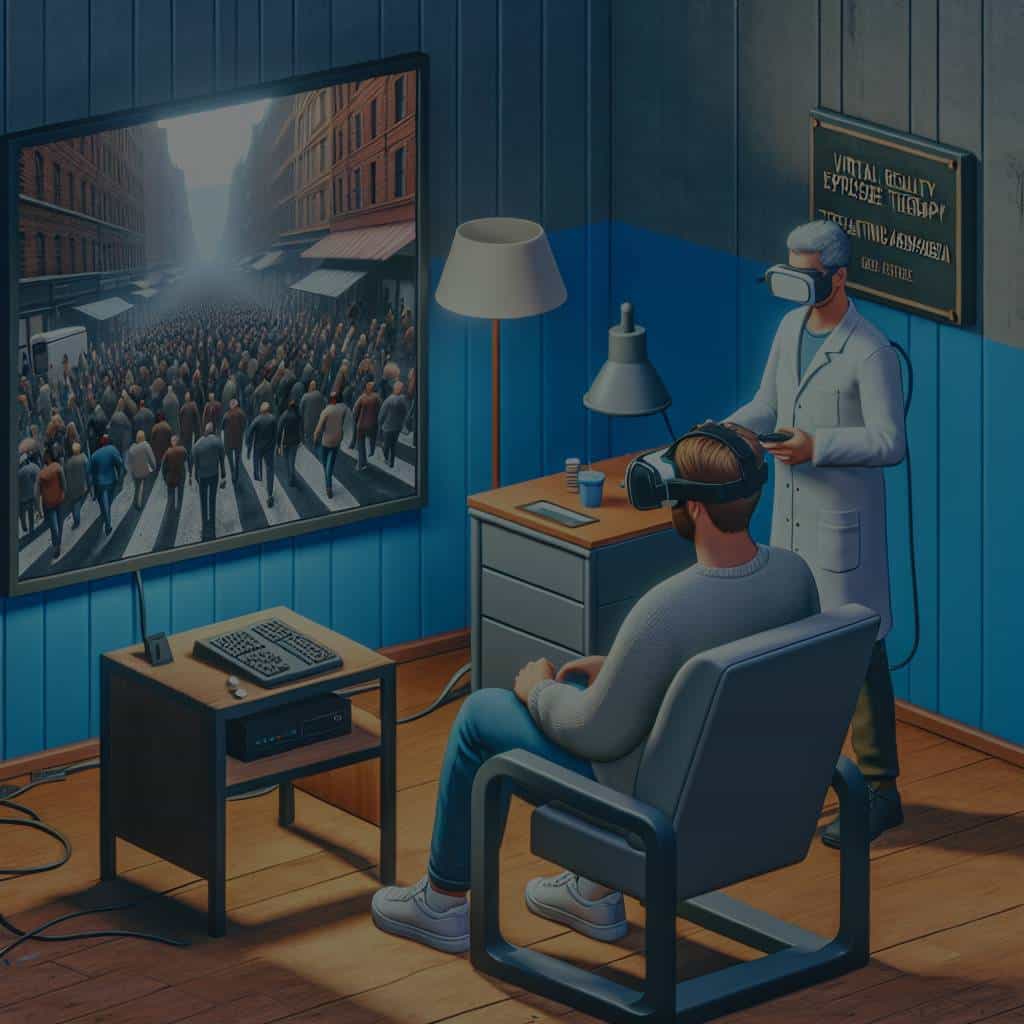In the rapidly evolving world of technology, virtual reality (VR) is not just a novel concept for gaming or entertainment anymore. It has entered the realm of health sciences, offering promising outcomes. Specifically, this article will discuss how VR is making strides in the field of psychology, primarily in treating agoraphobia, a fear-based disorder.
Agoraphobia and Anxiety Disorders
Agoraphobia, a type of anxiety disorder, is the fear of being in situations where escape might be difficult or that help wouldn’t be available if things go wrong. People with agoraphobia often avoid crowded places or traveling on public transportation, causing them to feel trapped, helpless, or embarrassed.
Also to read : What Are the Physical and Psychological Benefits of Aerial Yoga Practice?
Anxiety disorders, including agoraphobia, are among the most common mental health issues, affecting millions of people worldwide. Traditional treatment methods include cognitive-behavioral therapy (CBT) and exposure therapy, which involves gradual exposure to the fear-inducing situation or object.
Virtual Reality Exposure Therapy (VRET)
However, exposure therapy can sometimes be logistically challenging and potentially distressing for patients. This is where Virtual Reality Exposure Therapy (VRET) comes into play. VRET is a type of behavioral therapy that uses virtual reality technology to immerse patients in a simulated environment that triggers their fear or anxiety.
Additional reading : Can Drone Technology Be Used to Improve Emergency Medical Response in Remote Areas?
VRET has been widely studied as a treatment option for various phobias and anxiety disorders. In a typical VRET session, the patient wears a VR headset and experiences a series of virtual scenarios designed to mimic the situations that cause their anxiety or fear. These VR environments can be adjusted based on the patient’s comfort level, allowing for a gradual increase in exposure over time.
VRET for Agoraphobia: A Scholar Review
Many scholars have explored the effectiveness of VRET for agoraphobia. A PubMed study conducted on VRET and agoraphobia patients demonstrated that those undergoing VRET showed significant reductions in agoraphobia symptoms compared to those who did not receive VRET treatment. Moreover, these improvements were maintained at a six-month follow-up, indicating promising long-term benefits of this innovative treatment.
Similarly, a Google Scholar article highlights a study where VRET was used to treat agoraphobia with panic disorder. The results were impressive. The VRET group showed greater fear reduction and improved panic symptomatology compared to the control group, emphasizing the therapeutic potential of virtual reality in managing mental health disorders.
VRET: Limitations and the Future
Despite the promising results, like any treatment, VRET has its limitations. Some patients may experience cybersickness, a form of motion sickness induced by VR environments. Additionally, while VR technology is becoming more accessible, it is still considered relatively expensive, which may limit its widespread use in clinical settings.
However, the field of VR is advancing swiftly. Tech giants like Google are investing heavily in VR, making the technology more affordable and accessible. VR is also being integrated with other cutting-edge technologies such as Artificial Intelligence (AI) to enhance the therapy outcomes.
Furthermore, as more studies and clinical trials are conducted, VRET is likely to become a more established and accepted form of treatment in the future. The incorporation of VR in exposure therapy is an exciting development in the field of psychology and has the potential to redefine how we treat agoraphobia and other anxiety disorders.
To sum up, VRET, with its immersive and controllable environments, provides an innovative, effective, and potential treatment option for agoraphobia. With ongoing research and technological advancements, the horizon looks promising for the wider application of VR in therapeutic settings.
Real-Life Applications of VRET
As we delve further into the practical applications of Virtual Reality Exposure Therapy (VRET) in treating agoraphobia, let’s look at some real-world examples. Armed with VR headsets, patients are gradually exposed to simulations of crowded places, public transportation, open spaces, or other scenarios that typically induce fear or anxiety. The ability to control the simulation’s intensity allows for a more personalized therapeutic approach, in line with the principles of exposure therapy.
An interesting application of VRET was the study published in the Cyberpsychol Behav journal. It highlighted a real-life case where a woman suffering from agoraphobia who hadn’t left her house in years could finally step outside her home after undergoing VRET. She was gradually exposed to outdoor scenarios using VR, after which her fear levels significantly dropped. This case strongly demonstrates the efficacy of VRET in helping individuals overcome agoraphobia.
Moreover, a randomized controlled study found that panic disorder patients who received VRET experienced less anxiety during a real-life exposure task compared to those who received traditional exposure therapy. This supports the notion that VRET can be as effective, if not more, than traditional exposure therapy in managing panic disorders associated with agoraphobia.
Conclusion: The Future of VRET in Treating Agoraphobia
Overall, the integration of virtual reality in exposure therapy, especially in treating agoraphobia and panic disorder, seems to be an avenue worth exploring. VRET has proven its worth in numerous studies and real-life cases, showing significant improvements in patients’ symptoms and quality of life.
However, it is crucial to address the limitations of VRET, such as cybersickness and the high costs of VR technology. As VR becomes more accessible and affordable due to advancements and investments from industry giants like Google, it’s expected that these challenges will lessen over time.
Future research is required to further understand the long-term effects of VRET and to refine the technology for better therapeutic outcomes. The combination of VRET with other treatment modalities such as cognitive behavioral therapy may also yield promising results.
In conclusion, VRET represents a pioneering approach in the field of psychological treatments. It has the potential to transform the way we address agoraphobia and other anxiety disorders. As we continue to explore the applications of VR in therapy, we can look forward to a future where fear is no longer a barrier, but a challenge that can be overcome with the help of technology.











